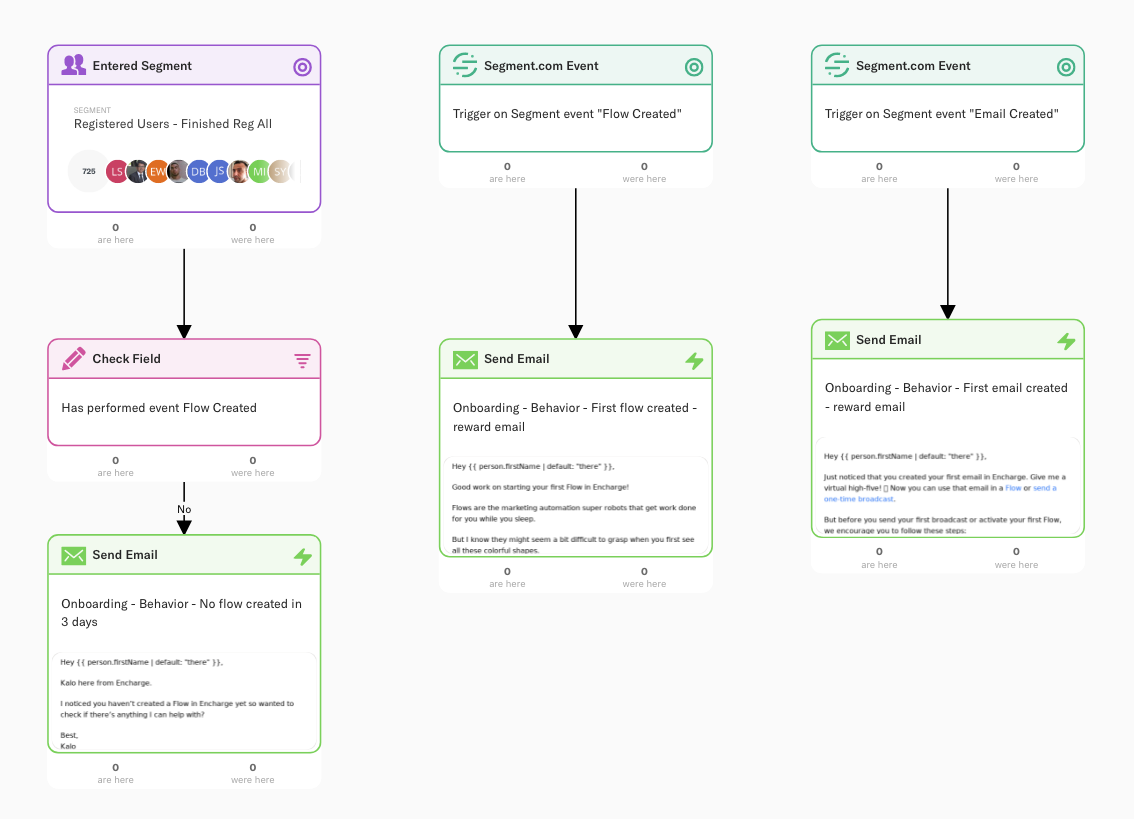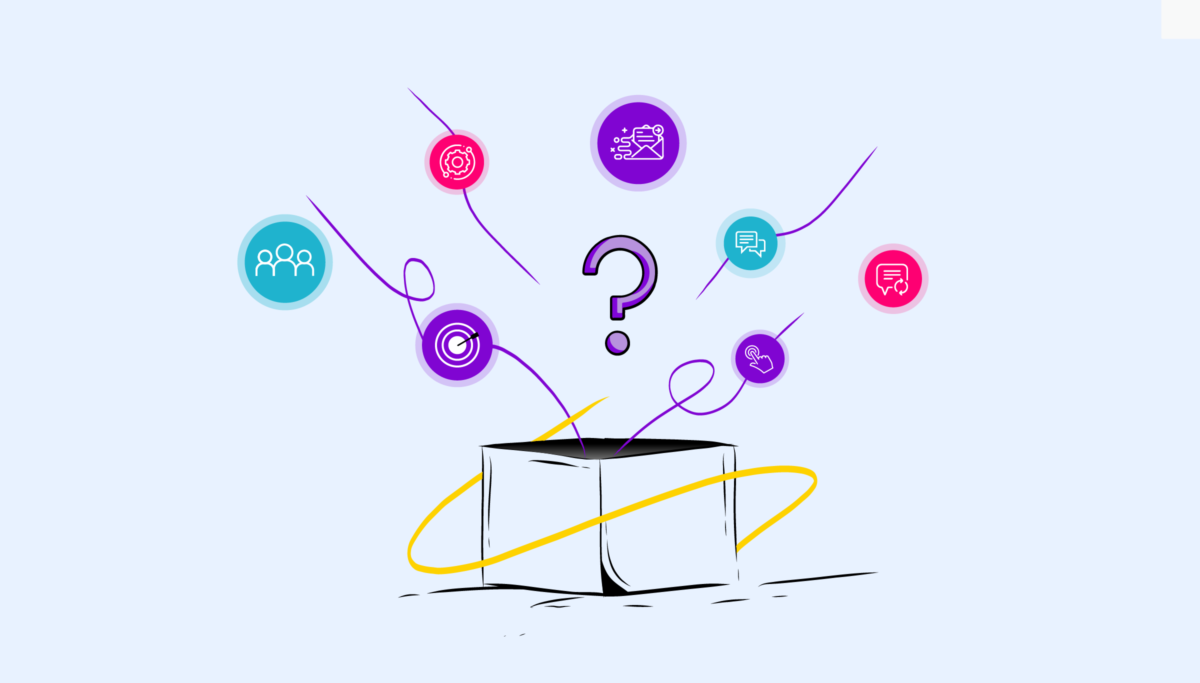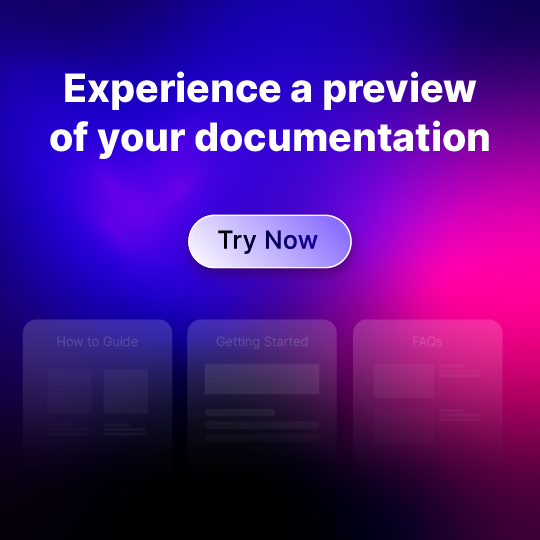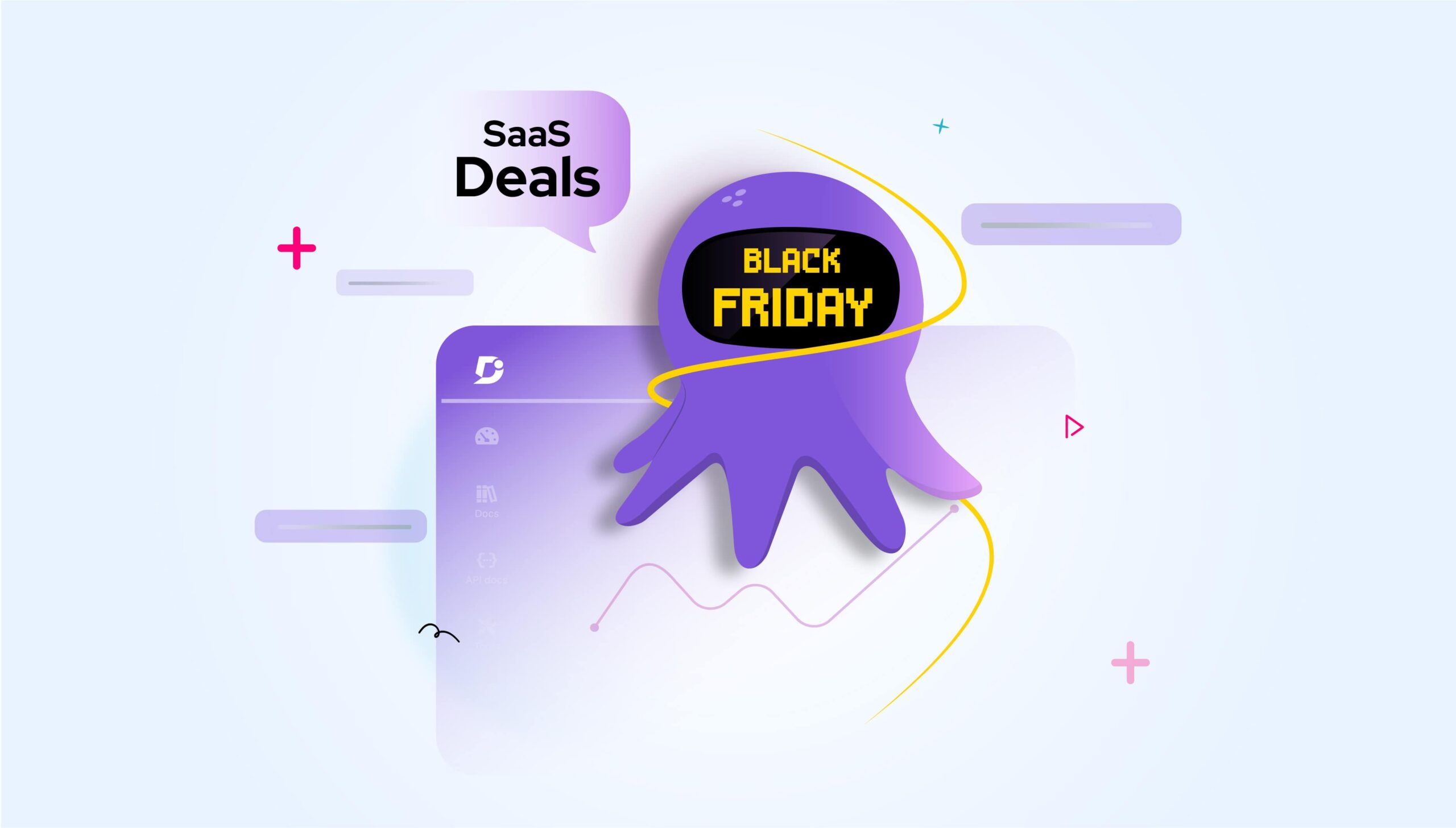Launching a new product is overwhelming.
Figuring out how to start, who will own what, and when to stop iterating will be challenging. Ironic as it seems, that’s a good thing! If you feel tied up in knots when thinking about product onboarding, that means you understand its complexity, significance, and scope.
One reason why we want to nail product onboarding right on the head is that customers churn.
It’s reported that 52% of customers leave within 90 days of purchasing because of poor engagement, poor customer service, and poor onboarding.

Anyone who’s ever worked in marketing can tell you that onboarding can make or break your product — and it’s a major effort that requires teamwork.
In this article, we’ll dissect the anatomy of product onboarding so you can create a great product experience that gets you happy active users.
What is the product onboarding process?
Product onboarding is introducing your product to users. It helps users learn how to use your product and its best features. It guides users to be successful in their first few uses instead of just figuring things out along the way.
The product Onboarding process is an integral part of a product-led growth strategy. The process should be smooth which makes the user adopt the product quickly and efficiently. Plus, it should train them to incorporate your tool into their regular activities.
In essence, the product onboarding process should help customers experience the value of your products right away.
Why is product onboarding important?
Let’s use the SaaS industry for example.
About 10% of SaaS businesses lose revenue to churn every year, which amounts to roughly 0.83% of revenue churn every month. Don’t let your product’s steep learning curve scare your users — and revenues — away.
Aside from that, a good product onboarding can also:
- increase customer satisfaction and loyalty
- sell your product more, increasing increased Lifetime Value (LTV)
- improve your word-of-mouth marketing
- reduce customer support tickets
- lower your customer acquisition costs (CAC)
Is product onboarding and user onboarding the same thing?
User onboarding and product onboarding share many similarities, but they’re 2 different terms.
The product onboarding process involves systems that will make the product discoverable during the initial interaction. It’s more of a discovery strategy that focuses more on the features alone.
User onboarding focuses on how certain user segments can use the product to get the most out of it. It’s more about showing the users relevant use cases so they can see the value of your product even more.
Anatomy of an effective product onboarding process
Product onboarding is not a cookie-cutter process. Consequently, it differs from business to business. The SaaS companies are the biggest fans.
There are different approaches to take depending on the complexity, model, and trial length of the products, but it’s important to know the basic factors you have to put in place.
An excellent product onboarding process should have these…

1. Defined goals and strategy
Before everything, you should set clear goals for your users at the end of the onboarding process. This will shape your entire onboarding journey.
To begin, ask yourself these questions: What is it that you want them to achieve? Which features do you want to highlight first? Who are the users you’re talking to and what do they need? What do they care about? How do they learn best?
You will have to talk to a few of them to answer these questions. Know your users well so they stick around and get what they came for.
2. The right onboarding team
Establish a team that will design the onboarding journey. This will differ from team to team, but you’ll probably need a representative from the following teams:
- Product – they know the tool the most
- Customer Success – they know the usual customer questions and problems
- Marketing – they’ll need to craft the messaging
- Sales – they know what the users want
The important thing is the team should be able to design a journey that has a holistic approach with valid user pains and real-life use cases. This way, the journey is smooth, cohesive, and compelling.
3. Cohesive onboarding journey
Customers will want a seamless experience as they explore your product.
You don’t want to overwhelm them with an email, a pop-up, and a chatbox that all say the same thing. Or you don’t want to confuse them with an email talking about feature A and linking them up to the app showing feature B.
The point is, you are the onboarding team so the journey is clear and ties up together.
4. Right medium and tools
It is important to identify your current tech stack, goals, and strategies so you can pick out the right medium and tools. You’ll also need to consider your budget because some tools are pretty expensive and might not be ideal for your use case, current tech stack, or audience size.
But here are the most helpful tools that you can use.
Emails
Trigger-based emails improve product activation and help convert free trial users to paying users. These emails get sent to a select group of users depending on their attributes, product usage, and where they are in the onboarding journey.
A marketing automation platform like Encharge can automate emails based on user behavior. This helps new users navigate your product minus the information overload.
With Encharge, you can accelerate product activation by sending relevant emails to the right people at the right time. Email automation platform is the perfect solution for startups who want to focus on their product and not on the tedious task of onboarding users.

Product tours
Product tours help users find their path through your product’s mountain of features (especially if you have a sophisticated SaaS).
Tours are like guided hikes that show them where exactly to click to do this or that. Here are some tips to make your onboarding product tour a success:
- Make it simple and easy to follow (2-3 steps)
- Don’t overteach, just show what they need to do first
- Allow users to set the pace of the tour
- Highlight what they get when they complete the tour
Knowledge Base
Knowledge Base is like a digital “how-to vault”. It holds tutorials, step-by-step guides, and even onboarding videos. With Knowledge Bases, users can easily find what they’re looking for. They can help themselves whenever they get stuck. They won’t have to wait for support to email them back to get some answers.
Providing contextual help during product onboarding is mandatory, a modern Knowledge base solution like Document360 could remove the hassle of documenting the product guides and making it instantly available for end-users. You can categorized and structure the content making it easy to search and navigate without getting lost.
An intuitive knowledge base software to easily add your content and integrate it with any application. Give Document360 a try!
Get Started
Onboarding Videos
An onboarding video is a visual way to help users get started with your product. This kind of video provides an introduction and explanation of specific features. A simple walkthrough of the product provides essential information to new customers within minutes. This should be no-fuss and easy enough for anyone to follow.
5. Compelling messages
Writing onboarding emails, in-app or product tours is key. Your messages should be clear, simple, and direct.
Here’s the trick: Avoid using jargon or complicated explanation that causes more confusion to your users. You should write like you’re explaining it to a kid (classic copywriting tip).
More importantly, your messaging should not only encourage users to take action — it should excite them!
6. Personal touchpoints
Building trust with your SaaS customers and ensuring they have an enjoyable experience is crucial to its success. This can be achieved by making personal touchpoints, now and then.
By initiating tailored messages for B2B and VIP users, you make users feel like you’re holding their hands during the onboarding journey.
This is recommended if you have a B2B audience who have the potential to become enterprise clients.
7. Feedback loop
The only way to optimize your onboarding for the better is through data. By analyzing the performance of your onboarding regularly, you can consistently improve your conversion rates as well.
Tracking your data ensures that your business is running at its peak potential, boosting your revenues, and making your customers happy at the same time.
Also, check out our article: Customer onboarding in banking
7 Common product onboarding mistakes to avoid
1. Doing it “solo”
Onboarding is not a single department’s job — it’s the entire company’s responsibility. Everyone should communicate and understand each other’s roles.
2. Showing off your product too much
You want to veer away from sounding like a grocery salesman. Showing off your product is fine, especially if you know how much it will benefit users, but overdoing it backfires. It causes overwhelm, driving potential customers away.
Show them the best parts of your product without bombarding them with information.
3. Perfecting the product onboarding in one go
Onboarding can never be perfected in one sitting. You’ll always think of something better to implement. You have to scope it, implement stuff, and improve over time. Or else, you’ll never get it out there.
4. Forcing new users to fully explore the product
Use a guide or tutorial that leads them in the right direction, but provide people with more freedom in their pace-setting at the same time. It’s better to add a “next” button that they can press whenever they’re ready to proceed. Or an alternative video that the visual learners can watch.
5. Overteaching
This is what usually happens on product tours. Too much information can be overwhelming and frustrating for users. You don’t have to explain every step. You can leave the rest for them to explore.
6. Ignoring disengaged users
If you want to maintain a good relationship with your users, it is important that they feel like their needs are being met. Nurture emails can help people get back into action.
Go beyond email. Integrate and activate users across all channels. Retarget trial users via Facebook ads. Ask the customer success team to reach out after a trial has ended. Using a different platform might pique their interest once again in the onboarding process.
7. The “set it and forget it” attitude towards onboarding
Onboarding is never-ending. You’ll always have new features to push out. You might have a UI redesign. Or your target customer segments can shift.
Updating your onboarding regularly is good practice to make sure that you’re sending the right messaging.
Getting your onboarding right
Product onboarding is a big task that involves huge commitment, time from the department leaders, and expensive spending on tech. But it’s a critical process that welcomes, delights, and educates users. To put it simply, onboarding helps your users become invested in your product.
So yes, it’s worth it and it’s important to get it right.
There is no one-size-fits-all onboarding process. However knowing the key elements will help you create an onboarding process that gets you the ROI you’re looking for.






 –
– 

